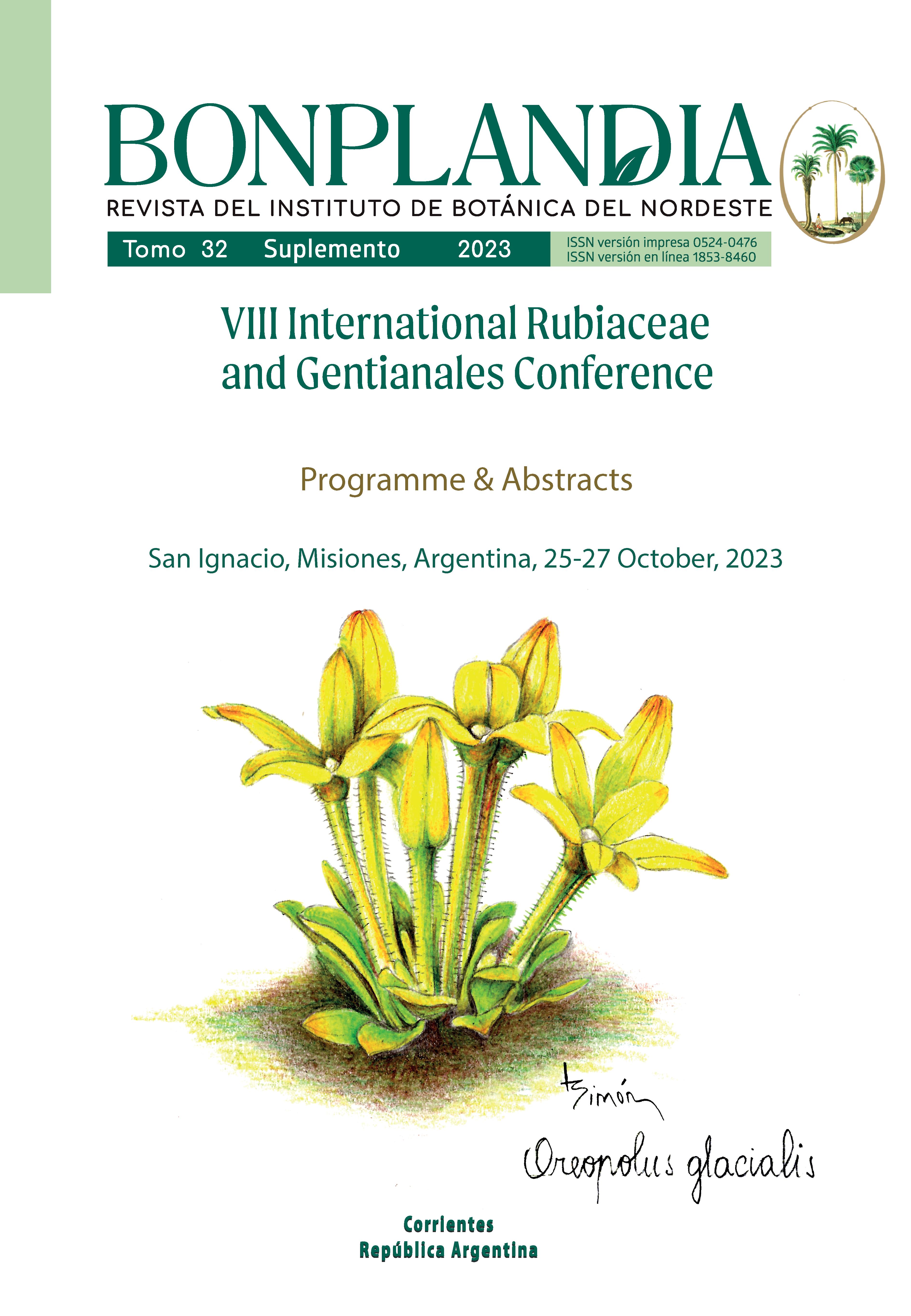Advances in the phylogenetic study of the tribe Cinchoneae (Rubiaceae) with emphasis on the genus Cinchona and Ladenbergia
Resumo
In its current circumscription, the Cinchoneae tribe includes 9 genera of neotropical distribution. Its species occur mostly in the Andes in South America, with few reaching Central America. Preliminary phylogenetic studies have suggested the monophyly of Cinchoneae but intrageneric relationships are still debatable. In this study, we sampled 8 genera of Cinchoneae (with ca 50% of species for Cinchona and Ladenbergia) and obtained multiple single-copy nuclear loci (ca 207 genes) by using the “Angiosperm353 universal probe set”, which was complemented with a taxonomic review of Cinchoneae. Phylogenetic inferences were realized with multispecies pseudo-coalescent (ASTRAL III) and gene concatenation analysis (ML). Our results strongly support the monophyly of the tribe and most of the genera, except for Ladenbergia. Furthermore, Ciliosemina, Ladenbergia, and Remijia formed a clade, although the position of Ciliosemina (= Remijia pedunculata) and Ladenbergia muzonensis is still elusive. The position of Ladenbergia muzonensis is intriguing due to its intermedíate floral morphology, which resembles both Remijia and Ladenbergia species. Additionally, our phylogeny also supports the recognition of a new species in Cinchona. Finally, our results show that sequencing data using the probe set designed for multiple gene capture is a useful tool for phylogenetic reconstructions in taxonomically complex groups.Downloads
Não há dados estatísticos.
Downloads
Publicado
2023-10-26
Como Citar
Chilquillo, E., Albán, J., Arakaki, M., Simoes, A. O., Maldonado, C., Romero, P., Ramírez, J. L., Cruz, I., Arieta, L., & Torres, J. C. (2023). Advances in the phylogenetic study of the tribe Cinchoneae (Rubiaceae) with emphasis on the genus Cinchona and Ladenbergia. Bonplandia, 32, 6. Recuperado de https://revistas.unne.edu.ar/index.php/bon/article/view/6943
Edição
Seção
Presentaciones
Licença
Copyright (c) 2023 Bonplandia

Este trabalho está licenciado sob uma licença Creative Commons Attribution 4.0 International License.
Declaration of Adhesion to Open Access
- All contents of Bonplandia journal are available online, open to all and for free, before they are printed.
Copyright Notice
- Bonplandia magazine allows authors to retain their copyright without restrictions.
- The journal is under a Creative Commons Attribution 4.0 International license.











.jpg)


